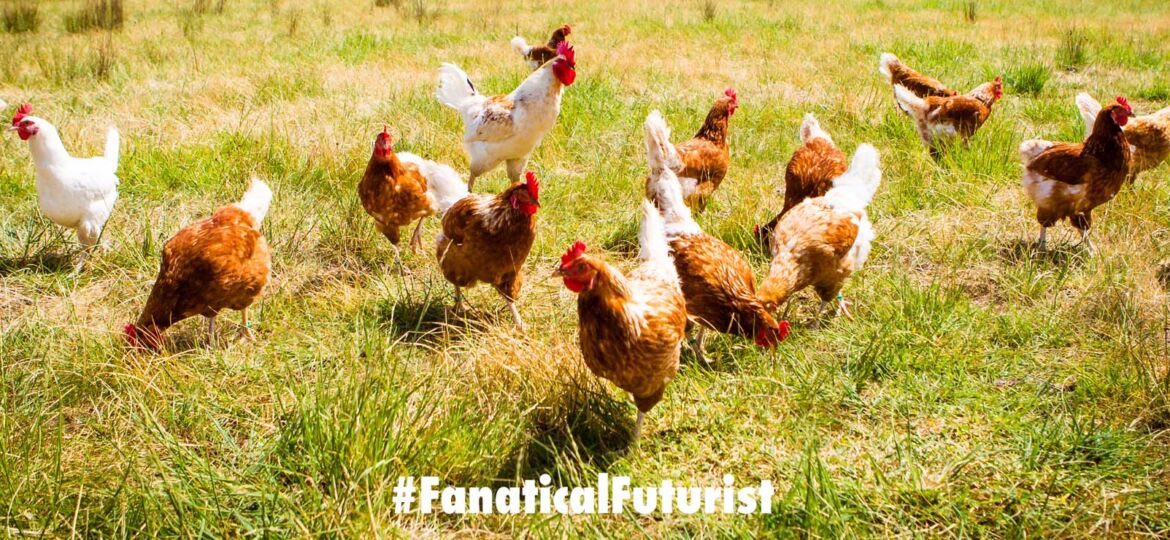
WHY THIS MATTERS IN BRIEF
Feeding the world’s growing population is one of the great challenges of our time, but new food production technologies could make famine a thing of the past.
Interested in the future and want to experience even more?! Watch a keynote, grab a free book, read thousands of articles, and connect!
Imagine being able to end famine, and imagine if instead of raising a whole chicken for slaughter, it was possible to pop a feather in a machine, and grow a chicken nugget. And then get your salad, grown in an autonomous robot filled vertical farm in a local warehouse, delivered to you by drone. Laugh as you might, in an age where we can grow prime fillet steak and real, note the emphasis on real not “artificial” or “fake” or “synthetic,” beef, chicken, duck, and turkey from stem cells cultured in bioreactors in a lab, all without the need for any animals to be involved, as well as dairy products and even fish including salmon and tuna, this latest feat, it turns out, is now not just probable – it’s here. That’s precisely what a US based company says it has figured out how to do and the entire process, from feather to nugget, takes about two days, and not only does it eliminate the need for the chicken, but also chicken farms, land, supply chains, and everything else that we associate with traditional animal reared meat today.
You can see an example of the chicken nugget being made in the video, as well as the chicken that provided the feather to grow them, and the company, Just, claims the chicken, Ian, is kicking back at a sanctuary in Northern California, not far from the company’s lab.
The other week the company’s CEO and co-founder tweeted: “Lay down your spears. 400,000 years ago, meat became part of the human diet, and throughout time, human beings have needed to kill the animal to enjoy their meat. First, with spears. Then, with industrial machines. Get ready for that paradigm to change.”
But how does it taste? Apparently, according to the BBC it tastes “impressive.”
“The skin was crisp and the meat flavoursome although its internal texture was slightly softer than you would expect from a nugget at, say, McDonalds or KFC,” wrote the reporter.
This kind of technology is nothing new though with the first lab grown hamburger unveiled in 2013. But that single patty cost $300,000, and although costs have fallen a long way since then, to, in some cases, around $100 per pound of “clean meat” as it’s called today no company has yet figured out how to scale up to commercial production.
That said though after a $300 million order from China for clean meat Israel based startup Future Meat Technologies hopes to begin selling its first lab grown products later this year at about $363 a pound with a goal of getting to under $4.50 a pound within the next two years.
Aside from clean meat, there’s also so called “fake meat” – these are lab designed combinations of plant based protein, and although they bleed and sizzle and are much more advanced than your standard chickpea slab, they’re still a way away from the experience of eating meat. But unlike clean meat fake meat has already made it from the lab to the supermarkets.
The reason interest in these products even exists is to do with the enormous environmental cost of raising cows, pigs and chickens – it’s estimated raising livestock for meat, eggs and milk generates 14.5 per cent of all global greenhouse emissions.
“Preliminary analyses show significant reductions in land use, water use, Greenhouse Gas emissions, and energy use,” said a spokesman for the company. “With plants providing nutrients for animal cells to grow, we believe we can produce meat and seafood that is over 10x more efficient than the world’s highest volume slaughterhouse. All this without confining or slaughtering a single animal and with a fraction of the greenhouse gas emissions and water use.”
It’s also estimated the production of meat and seafood around the world will have to massively increase in coming decades, as the global population continues to grow and more people adopt Western style diets high in animal protein, and as a result we have two options – chew up the planet’s resources even more trying to feed everyone, or find new ways to manufacture the food we need.

















